
8-31 #IndependenceDay : Xiaomi Unisoc have allegedly co-develop a 4nm chipset; Tecno is showcasing a trifold concept device; OPPO has showcased its own tri-fold smartphone concept; etc.

Xiaomi and Unisoc have allegedly joined forces to co-develop a 4nm chipset and a new development suggests the first Xiaomi-branded chipset from the collaboration is set to launch in early 2025. It will reportedly be fabbed on TSMC’s 4nm N4P node and will feature a 5G modem developed by Unisoc. The SoC is expected to offer Snapdragon 8 Gen 1-level performance which was Qualcomm’s flagship chip powering the high-end devices of 2021 and 2022. (GSM Arena, Twitter)

Huawei and HiSilicon are expected to deliver some major chip news in Sept 2024. This event has “triggered talk of breakthroughs and the official formation of a Huawei-centred ecosystem from chip design to operating systems”. Shenzhen Huaqiang, a distributor of HiSilicon’s products, HAS issued a statement warning investors that there were still “uncertainties” around HiSilicon’s new product launch. the company said it would redouble its efforts to promote and expand the market for new HiSilicon products. Huizhong Instrumentation, a maker of ultrasonic flow measuring devices has also issued a statement, saying the company uses HiSilicon chips in some products but does not purchase directly from Huawei. (Android Headlines, SCMP, Sina)
Qualcomm introduces the Snapdragon 7s Gen 3 Mobile Platform. The Snapdragon 7s Gen 3 delivers 20% better CPU performance, a 40% faster GPU, 30% better AI performance, and 12% overall power savings compared to the 7s Gen 2. The power savings on the CPU side only are 45%. The Kryo CPU has one Prime core clocked at up to 2.5 GHz, 3 Performance cores clocked at up to 2.4 GHz, and 4 Efficiency cores clocked at up to 1.8 GHz. Up to 16GB of RAM is supported, and UFS 3.1 storage. The chip has on-device generative AI capabilities thanks to the AI Engine dedicated NPU. It also supports AI-based noise cancelation and noise reduction, as well as 200 MP photo and 4K HDR video capture. The Spectra Triple ISP enables concurrent photo and video capture, with ultra-fast parallel processing and smooth zooming. (Gizmo China, GSM Arena, Qualcomm)


ZTE has started working on its new foldable smartphone, the Nubia Flip II. ZTE launched its first foldable smartphone, the Nubia Flip 5G, in Feb 2024. The new Nubia Flip II will have the model number NX732J. The new foldable smartphone is likely to be unveiled in Feb 2025. (Gizmo China, Sina, QQ)

Tecno is now showcasing the Phantom Ultimate 2, which is a trifold concept device whose display unfolds to 10” in diagonal. It can expand from a 6.48” screen size when folded all the way up to a 10” LTPO OLED screen with a 1620x2880px resolution and 4:3 aspect ratio. Tecno claims the Phantom Ultimate 2 is the first foldable with TDDI technology which places both the display driver and touch sensor on a single chip. It also supports screen hovering and is impressively thin, measuring just 11mm when folded all the way thanks to a self-developed dual hinge mechanism. Tecno tested the elaborate hinge mechanism for 300,000 folds. The brand also developed the thinnest battery cover on any smartphone, measuring just 0.25mm. (My Drivers, Android Central, GSM Arena)


OPPO has showcased its own tri-fold smartphone concept. Zhou Yibao, the product manager for the OPPO Find series, has shared a render of the OPPO’s tri-fold device. The interface running on the phone is ColorOS.(Android Headlines, Android Authority, GSM Arena, QQ)
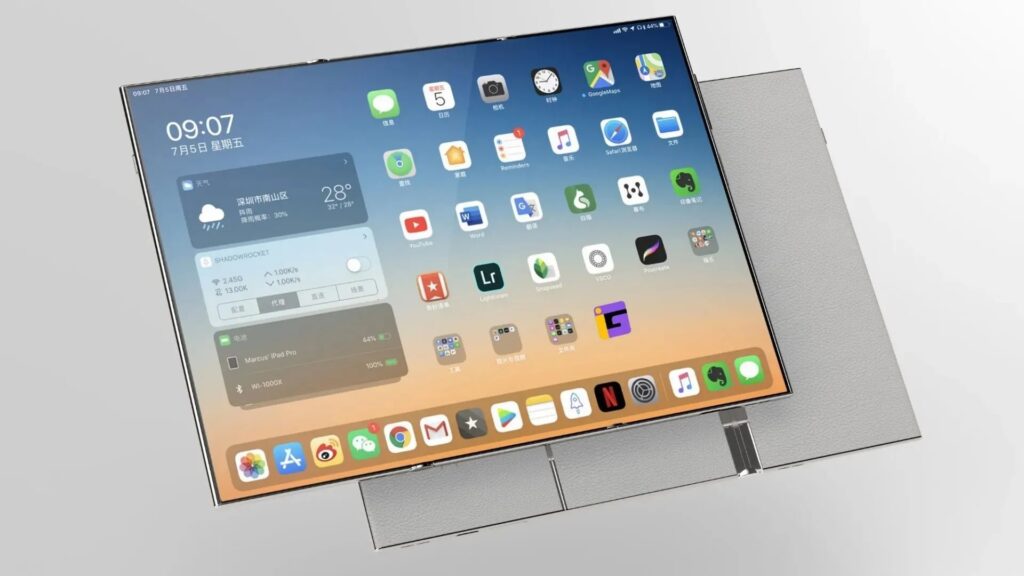
Samsung Display has showcased its stretchable MicroLED display. According to the company, the stretchable MicroLED display can be stretched up to 1.25x its original size (25% elongation) while maintaining a pixel density of 120 PPI, the highest among similar products in the industry. Stretchable displays can be used to create 3D buttons or applied to irregular surfaces like clothing, furniture, and buildings. (CN Beta, Microled-Info, SammyFans)

Samsung is reportedly preparing a Galaxy Z Fold Special Edition, and it will be a thinner than the Galaxy Z Fold6. It will also feature a 200Mp main sensor. The new phone should have an 8″ foldable panel, a 6.5″ cover display, and a 10.6mm thickness in its folded state. (GSM Arena, Twitter)
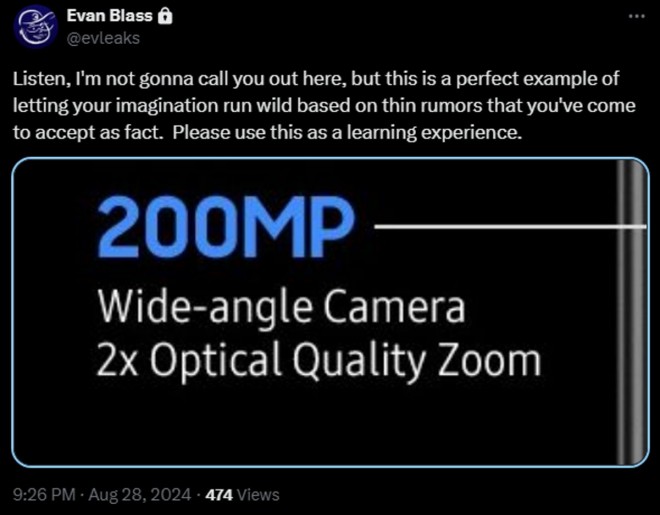

SK Hynix has developed a series of new storage products, which includes USF 4.1 universal flash memory. SK Hynix showcased two UFS 4.1 universal flash memories with capacities of 512GB and 1TB respectively. Both of them are based on 321-layer stacked V9 1Tb TLC NAND flash memory. The company not only displayed the announced 1Tb capacity and 2.4Gbps rate TLC, but also exhibited the industry-leading 3.2Gbps V9 2Tb QLC and 3.6Gbps high-speed V9H 1Tb TLC particles for the first time.(Gizmo China, Inspire2Rise)
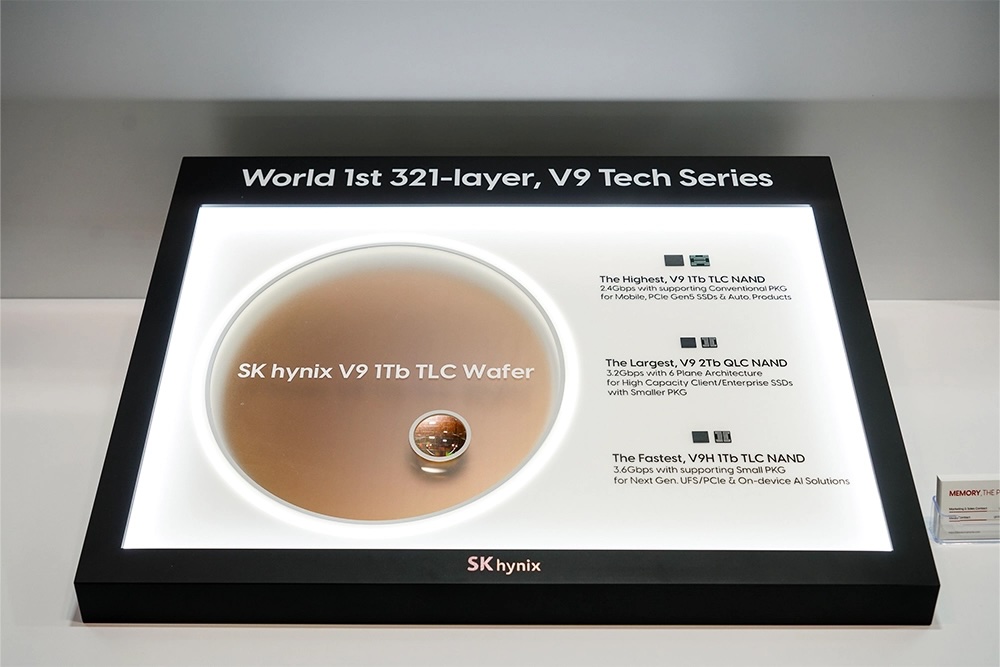
Micron Technology has entered into a purchase and sale agreement (PSA) with AUO to acquire existing factory land and equipment in Tainan, valued at NTD7.4B (about USD229.4M). This acquisition, however, is not intended for the production of the highly sought-after High Bandwidth Memory (HBM) products as many had speculated. Instead of expanding its HBM capabilities, Micron plans to use this newly acquired facility for front-end wafer testing to support the ongoing expansion of its DRAM production in Taichung and Taoyuan. The transfer is expected to be completed by the end of 2024, with production anticipated to begin in 2H25. (CN Beta, TrendForce, Digitimes, Business Korea, UDN)

SK Hynix is working towards the development of DDR5-based CXL 2.0 memory solutions for the AI segment, especially for LLMs. CXL refers to Compute Express Link, which is an interconnect technology that allows faster data transfer between the CPU and GPU, but in the case of AI, it is actually between the CPU and accelerators. CXL is beneficial from conventional PCIe interfaces since it enables GPUs to access system memory directly, enhancing performance significantly. CXL protocol has recently seen massive interest from the markets, given that modern-day memory techniques are unable to fulfill the power required by large-scale AI models.(CN Beta, WCCFTech)


Huawei has introduced TrueSense, which is a system aiming to set a new standard in health monitoring. TruSense combines data from sensors for respiratory rate, SpO2 (blood oxygen levels), body temperature, blood pressure, heart rate. The company claims they are more accurate, and comprehensive, and better used in the company’s ecosystem. Rico Zhang, President of Huawei Smart Wearable and Health product line said this health advancement would push users to pursue healthier lifestyles. The new Health Glance feature will allow consumers to measure over 10 health indicators in just 60 seconds. This includes the well-known heart rate or ECG, but also more obscure ones like the lung function and infection risk, sleep apnea, and hyperglycemia risk. (GSM Arena, Gizmo China, Weibo, Huawei, Huawei, C114)



Chinese regulators plan to ban sales of certain types of wireless chargers, including some from Apple, in the latest example of growing compliance risks for foreign electronics products in China. The updated radio frequency management regulations from China’s Ministry of Industry and Information Technology, which come into effect on 1 Sept 2024, state that only three frequency bands will be recognised for mobile and portable wireless charging equipment: 100-148.5kHz, 6765-6795kHz, and 13553-13567kHz. In addition, rated transmission power shall not exceed 80W. The new rules aim to “avoid harmful interference of radio operations”, such as radio communications in the aviation industry, and “maintain the order of airwaves”, according to the provisions. The rules are expected to impact Apple’s wireless charging products, since the company’s 15W wireless charging feature is based on the Apple-owned MagSafe and Qi2 standards, both of which operate at 360kHz, a frequency that is out of the allowed range. (IT Home, Neowin, SCMP, Yahoo)
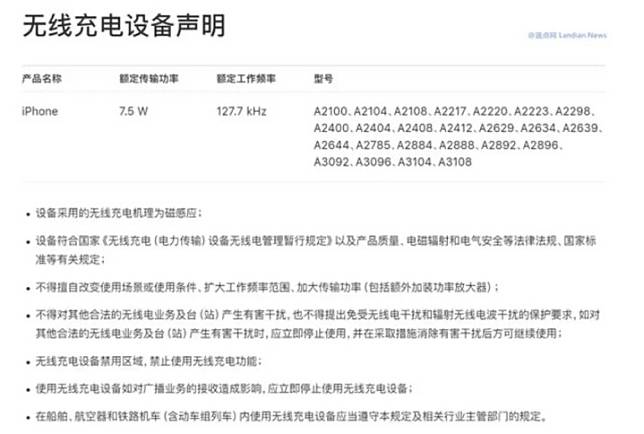
General Motors (GM) and Samsung SDI have finalized a USD3.5B deal to build an electric vehicle battery plant in Indiana. The factory will have an initial capacity of 27GWh, which could go up to 36GWh. The factory was expected to start production in 2026, but now it is anticipated that batteries will not start rolling off the line until 2027 at the earliest. Construction at the factory is already underway. The new factory will be located in New Carlisle, Indiana, a small community outside South Bend. GM and Samsung will receive incentives from the local community in the form of 100 percent tax abatements for 10 years. In exchange, GM said it would pay a USD4.5M infrastructure fee per year for 10 years to cover costs for sewer extensions, road improvements, and new fiber optic cables. (The Verge, Samsung)
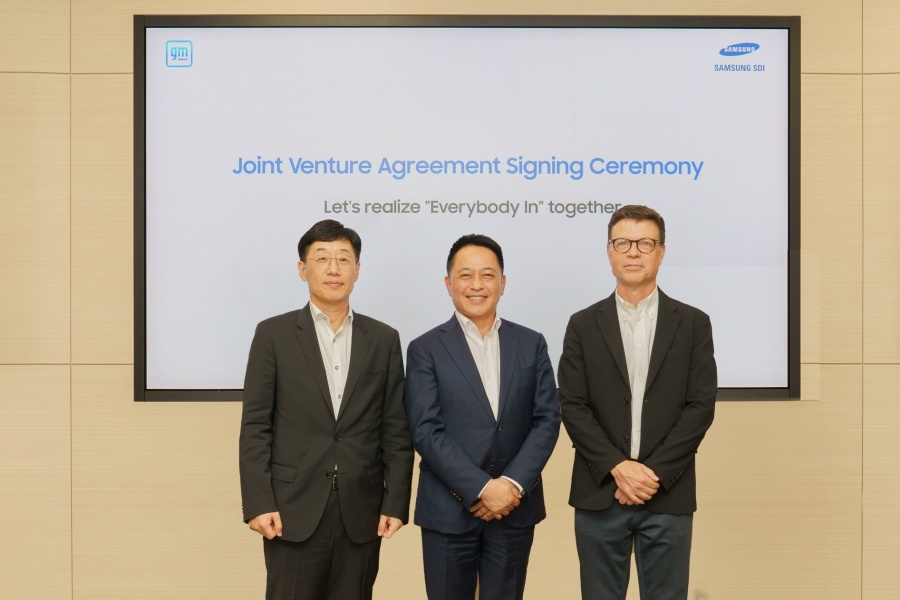
National Storage Affiliates Trust (NSA), a major player in the self-storage industry, has partnered with community solar developer Solar Landscape to roll out 100 megawatts (MW) of solar capacity across 8.5 million square feet of NSA’s rooftop space. The commercial and community solar developer Solar Landscape’s new rooftop solar panel grid on the NSA’s 1,052 self-storage facilities and properties across 42 states and Puerto Rico are expected to produce at least 100 megawatts of solar capacity. The NSA, headquartered in Greenwood Village, Colorado, is one of the nation’s largest self-storage operators with brands like iStorage, Move It, Northwest and SecurCare.(Engadget, Electrek)


SpaceX CEO Elon Musk has claimed that the company will provide free access to emergency services via satellites. He further added that this offer would apply to smartphone users globally, subject to government approval. His statement came in response to news that Starlink satellites are able to provide wireless emergency alerts to smartphone users. This development is part of SpaceX and T-Mobile testing a satellite-based network. The two companies announced a partnership back in 2022 that would see SpaceX satellites used to improve cellular coverage on regular smartphones, including text messaging capabilities. (Android Authority, Twitter, Business Insider)

Telecom equipment maker Nokia has been exploring options for its mobile networks business and has drawn interest from suitors including Samsung Electronics. Nokia has considered multiple options including a divestment, selling some or all of its mobile networks business which could be valued at as much as USD10B, as well as combining the business with a rival. (Android Headlines, Twitter, Reuters, Mobile World Live)


Apple will allegedly call the expected thinner iPhone the “iPhone Air”. This is based on the expected specifications of the 2025 iPhone being noticeably less than those anticipated for the rest of that year’s iPhone 17 Pro models. It is also been previously reported that the slim iPhone will have a redesigned camera. The iPhone Air will be a true replacement for the iPhone Plus. A new and thinner iPhone rumors have only surfaced in 2024. For years now there have been claims of a redesigned model coming, more often called the iPhone Ultra. (Apple Insider, YouTube, 9to5Mac)

Samsung may bring back the ‘Note’ moniker for the upcoming Galaxy S25 Ultra, calling it the Galaxy S25 Note, while also renaming the Galaxy S25 Plus. The transition from ‘Ultra’ to ‘Note’ likely means that Samsung wants to remind future buyers that they are investing in its top-end flagship, which will also arrive with ‘out of the box’ features baked into the S-Pen.(CN Beta, Weibo, TechRadar, Twitter, Twitter, WCCFtech)


Xiaomi has introduced a new service designed to alleviate concerns for users who have lost or damaged their earphones. The Worry-Free Earphone Loss Service offers a one-time 50% discount on a replacement earphone when purchased through Xiaomi’s official channels. Currently, this service is available for the Xiaomi Buds 4 Pro and Xiaomi Buds 5 models. To avail of the service, customers must purchase it alongside their new earphones. In the event of a lost or damaged earphone, users can contact Xiaomi customer support to initiate a replacement process. (Gizmo China, IT Home)

According to Canalys, the smart personal audio market (including TWS, wireless earphones and wireless headphones) rebounded strongly in 2Q24, with notable gains across several segments. Total shipments reached 106M units, up 10.6% YoY, the highest number of second-quarter shipments in history. Both TWS and wireless headphones were growth drivers, reaching 77M and 15M units, respectively. TWS remains the leader of the global smart personal audio market in 2Q24, solidifying a commanding 72.6% market share with 12.6% annual growth. Despite the traditional TWS segment’s slowdown, leading vendors have adeptly navigated the challenge by strategically pricing models under USD50. For the first time, the sub-US$50 price segment accounted for more than 50% of the market in 2Q24. (Neowin, Canalys)

When asked asked whether we would ever see another Fitbit-branded smartwatch anytime soon, Google Pixel Wearables Sandeep Waraich replied that Pixel Watch is their smartwatch part of the portfolio. He has confirmed that moving forward everything from Fitbit would focus on the more minimalistic, long-lasting trackers the brand has become synonymous with. While the Sense 2 and Versa 4 will continue to be available in the market, Pixel Watches are Google’s next iteration of smartwatch for Fitbit. Waraich also shed some light on how the Google and Fitbit teams have collaborated to build Pixel watches, referencing the former’s AI prowess and the latter’s established expertise in interpreting heart-rate sensor data for greater insights. (Engadget, Android Authority)


Meta plans to ship an extremely light mixed reality (MR) headset in 2027. The company CEO Mark Zuckerberg and CTO Andrew Bosworth have canceled a high-end headset planned for 2027 codenamed La Jolla, which previous reports had described as being a Quest Pro 2. They greenlit a very different headset codenamed Puffin, with the same target year of 2027. Puffin does not include controllers, instead using the gaze-and-pinch input scheme introduced by Apple Vision Pro. (The Verge, The Information, UploadVR, Reuters)


Samsung plans to offer 7 years of a free upgrade to its open-source smart TV operating system Tizen for its AI-powered TVs as the company strives to cement its market leadership. Yong Seok-woo, president and head of Samsung’s visual display business division, said the connectivity offered by Tizen OS differentiates Samsung from Chinese companies. Initially, the 7-year free update service will be applied to models released Mar 2024 and some products released in 2023. (Neowin, KED Global)

Xiaomi is reportedly undergoing a strategic shift in its TV business, gradually phasing out certain low-cost TV models in the Chinese market to concentrate on building a more integrated business ecosystem. This move is part of Xiaomi’s broader strategy to move beyond hardware sales and tap into recurring revenue opportunities through internet services. As part of its strategic transformation, Xiaomi is prioritizing three key growth areas: smartphones and wearables, home appliances, and smart mobility devices. By focusing on these segments, the company aims to create a more interconnected and value-driven ecosystem for its users. (Gizmo China, CNMO)
